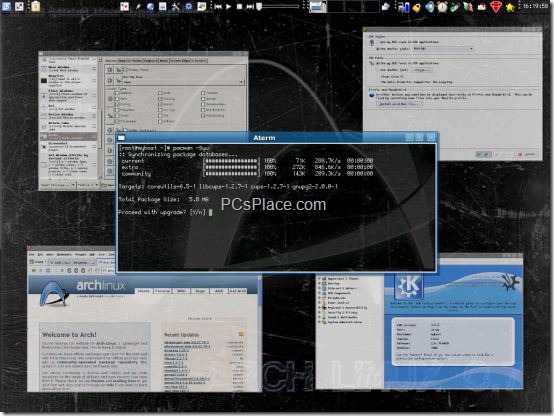Arch Linux is a lightweight, flexible and simple Linux Distribution which is targeted at competent GNU/Linux users. Its Development focuses on a balance of minimalism, elegance, code correctness and modernity. It provides a minimal environment upon installation, (no GUI), already compiled and optimized for i686/x86-64 architectures. We already discussed about a lot of Linux Distros and also How to create your own Linux Distribution.
Arch’s design philosophy and implementation make it easy to extend and mold into whatever kind of system you’re building, from a minimalist console machine to the most grandiose and feature rich desktop environments available. Rather than tearing out unneeded and unwanted packages, Arch offers the power user the ability to build up from a minimal foundation without any defaults chosen for them. It is the user who decides what Arch Linux will be.
Arch is backed by an easy-to-use binary package system – Pacman – that allows you to upgrade your entire system with one command. Pacman is coded in C and designed from the ground up to be lightweight, simple and very fast. Arch also uses a ports-like package build system (Arch Build System) to make it easy to build and install packages from source, which can also be synchronized with one command. You can even rebuild your entire system with one command. Everything is done quite simply and transparently. The rolling release model allows one-time installation and continuous seamless upgrades, without ever having to reinstall or perform elaborate system upgrades from one version to the next.

Arch Linux strives to maintain the latest stable version of its software, based on a rolling-release system. We currently support a streamlined core package set for the minimal i686 and x86-64 base systems, thousands of additional, high-quality binary packages among both developer and user maintained repositories, and many thousands of PKGBUILD scripts, for building and packaging from source.
Arch provides non-patched, vanilla software; packages are offered from pure upstream sources, how the author originally intended it be distributed. Patching only occurs in extremely rare cases, to prevent severe breakage in the instance of version mismatches that may occur within a rolling release model. Arch incorporates many of the newer features available to GNU/Linux users, including modern file systems (Ext2/3, Reiser, XFS, JFS), LVM2/EVMS, software RAID, udev support and initcpio, as well as the latest available kernels.
The Arch Way is a philosophy aimed at keeping it simple. The Arch Linux base system is quite simply the minimal, yet functional GNU/Linux environment; the Linux kernel, GNU tool chain, and a handful of optional, extra command line utilities like links and Vi. This clean and simple starting point provides a rock solid base for expanding the system into whatever the user requires.
Arch’s simple init system is heavily inspired by the *BSD way of incorporating calls from a single file, (etc/rc.conf), rather than a convoluted directory structure containing symlinks for each run level. System configuration is achieved through editing simple text files.

Great goods from you, man. I’ve remember your stuff prior to and you’re just extremely magnificent. I actually like what you have received right here, certainly like what you are saying and the best way by which you say it. You’re making it enjoyable and you still care for to stay it sensible. I cant wait to learn far more from you. That is really a great website.
Hello, You have carried out an admirable job. I will definitely delicious it and I’ll suggest to my local freinds. I am certain they will be benefited from this website.
Larry King once remarked, “I remind myself every morning: Nothing I say this day will teach me anything. So if I’m going to learn, I must do it by listening.” That’s exactly how I feel. I am grateful to have learned something new today. – Tenis
The ext4 file system is also supported.